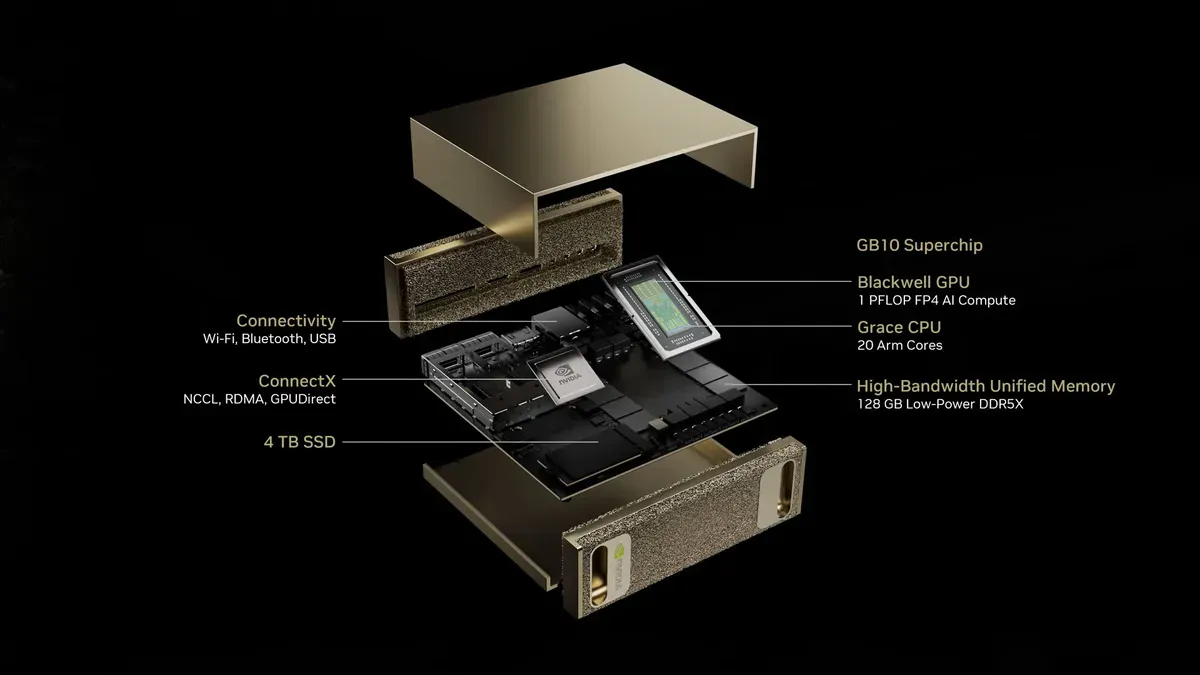
At CES 2025, NVIDIA CEO Jensen Huang unveiled "Project DIGITS", a desktop AI supercomputer designed to make the power of its Grace Blackwell platform accessible to researchers, students, and developers.
Key Details:
- The device delivers 1 petaflop of AI computing performance and can run AI models with up to 200 billion parameters
- Features 128GB of unified memory and 4TB of storage, powered by the new GB10 Grace Blackwell Superchip
- Available in May 2025 starting at $3,000, targeting researchers, data scientists, and students
Running large AI models typically requires expensive cloud infrastructure or data center access. Project DIGITS changes this dynamic by bringing this capability directly to developers' desks, running on standard wall power.
The device (about the size of a Mac Mini) is powered by NVIDIA's new GB10 Grace Blackwell Superchip, and offers petaflop-scale performance for tasks like fine-tuning and inference on large AI models. With 128GB of unified memory and up to 4TB of storage, Project DIGITS packs a punch that was previously reserved for server-grade hardware.

The GB10 chip, co-developed with MediaTek, integrates NVIDIA’s Blackwell GPU and Grace CPU, connected via NVLink for high-speed communication. This architecture enables Project DIGITS to run large language models with up to 200 billion parameters—and with two units linked, models as large as 405 billion parameters are within reach.
For aspiring AI developers, Project DIGITS offers extensive support through NVIDIA’s AI Enterprise software stack. Pre-installed frameworks, orchestration tools, and model libraries allow users to accelerate experimentation and prototyping. The platform also supports popular development environments like PyTorch and Jupyter notebooks, making it versatile for a range of AI applications.
Jeff Boudier, Head of Product at Hugging Face, sees significant potential in the device. "NVIDIA's Project DIGITS will empower AI builders to build and run their own Gen AI models and systems at the edge. With 128GB of unified memory, AI builders can run 200B parameter models locally," he notes.

While $3,000 isn’t exactly a casual purchase, but it’s a fraction of the cost of comparable solutions—and a transformative price point for individual developers and smaller institutions. The accessibility of this technology has the potential to broaden participation in AI innovation, fostering new breakthroughs in robotics, computer vision, and more.
NVIDIA plans to launch Project DIGITS in May, with availability through top partners. It’s a strategic move to keep its CUDA framework central to the AI development ecosystem, while competitors like AMD and Intel try to carve out their own niches.

